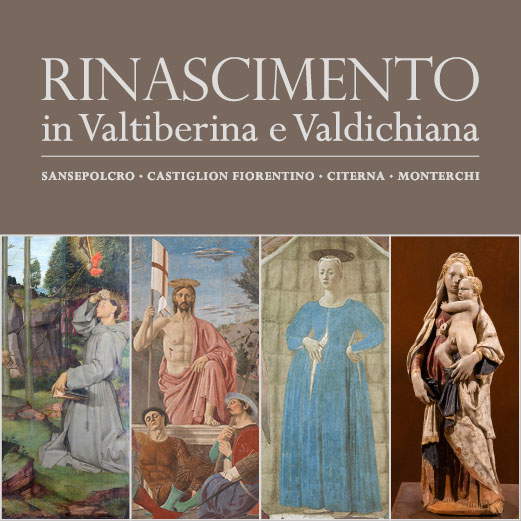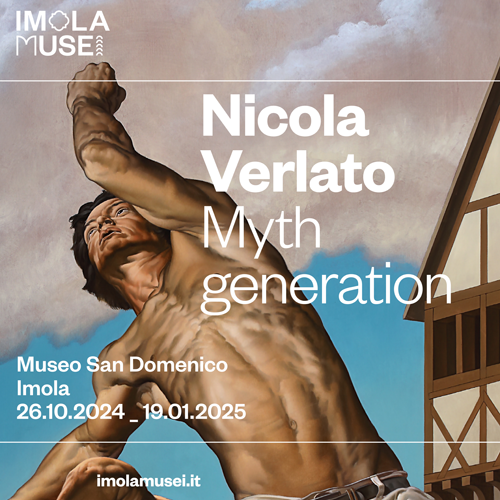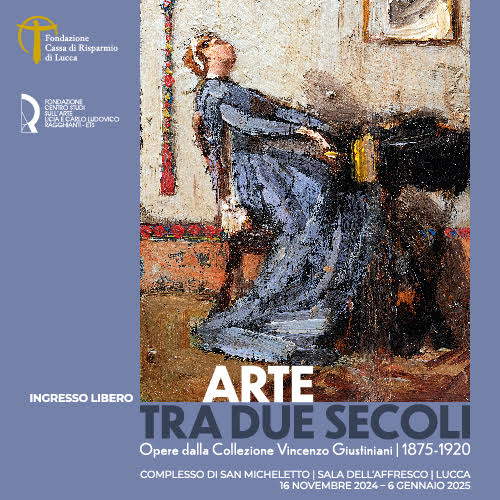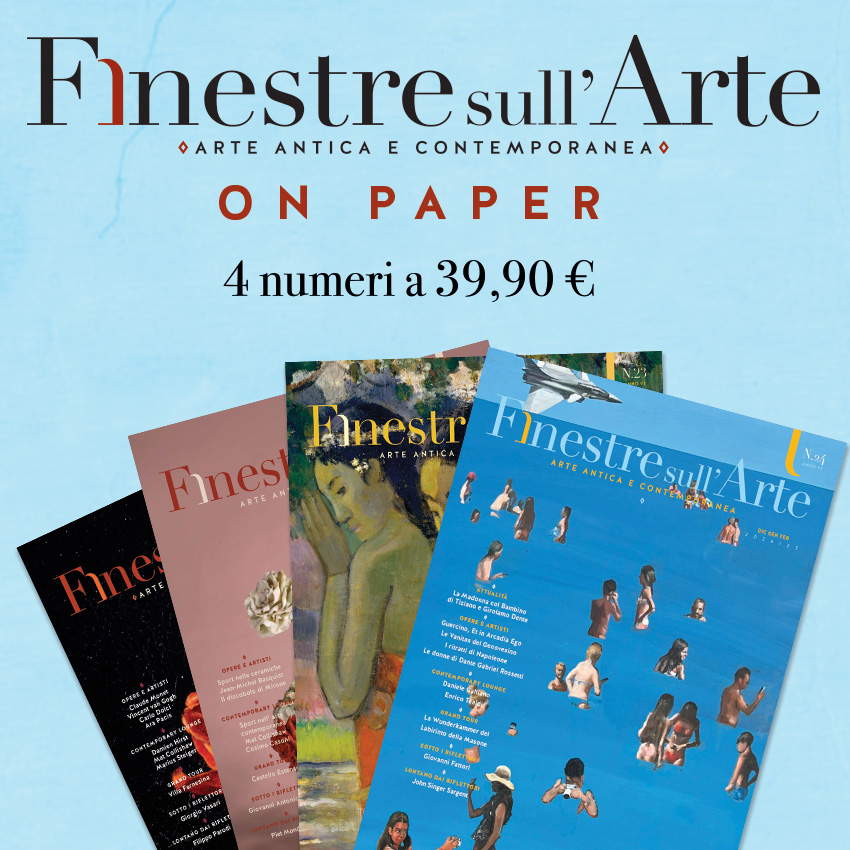Venice Biennale 2019, the ten best national pavilions according to Windows on Art
The fifty-eighth Venice Biennale proved to be very rich, and there are not a few interesting topics emerging from this 2019 edition of the world’s most important contemporary art exhibition. We have already had a chance to comment on the winner of the Golden Lion for the best national participation(the pavilion of Lithuania), and shortly we will offer a reading of the international exhibition curated by Ralph Rugoff. However, our journey begins with the national pavilions: after visiting the preview, we propose what we think are the ten best pavilions of the 2019 Venice Biennale, which we are going to list below in what we think is a possible ranking from tenth to first place. In the coming days we will also devote more specific insights to the individual pavilions: below is our ranking with reasons.
10. ex aequo: Azerbaijan and Nordic countries (Finland-Norway-Sweden)
Azerbaijan. Exhibition: Virtual Reality. Artists: Zeigam Azizov, Orkhan Mammadov, Zarnishan Yusifova, Kanan Aliyev, Ulviyya Aliyeva. Curators: Gianni Mercurio, Emin Mammadov.
Nordic Countries. Exhibition: Weather Report: Forecasting future. Artists: Ane Graff, Ingela Ihrman, nabbteeri Collective. Curators: Leevi Haapala, Piia Oksanen.
We could not exclude either the Azerbaijan pavilion or the Nordic pavilion from our ranking, and for that reason we decided to give the two participations tenth place ex aequo. Azerbaijan takes action on the issue of fake news and informationoverload: the works may seem obvious and in some cases certainly kitschy (as is the case with the gray mannequins joined by slinky springs that represent the flow of news from newspapers and social media), but they are certainly effective and appeal to the public (the installation at the entrance, with silhouettes bombarded with news headlines, is particularly illustrative, and the same can be said of Muraqqa, a work with which Orkhan Mammadov revisits a traditional Azerbaijani art form to cast it in a present made up of plots and storytelling). The Nordic countries, on the other hand, intervene on the theme of climate change, with a poetics typical of Scandinavian countries (and, to be honest, a bit Ikea-esque and not particularly original, but still impressive). Works created from waste or recycled materials abound, space for the blending of performance and craft practices (as in the work of Ingela Ihrman, who performs wearing plant costumes), to installations that reason about the way humans transform the world, to the self-sufficient ecosystems of the nabbteeri collective. However, the Nordic countries’ proposal, while similar to many other productions, requires a minimum of reasoning and empathy: this is probably why audiences and journalists, in order to reflect on global warming, preferred the more immediate pavilion of Lithuania, which won the Golden Lion.
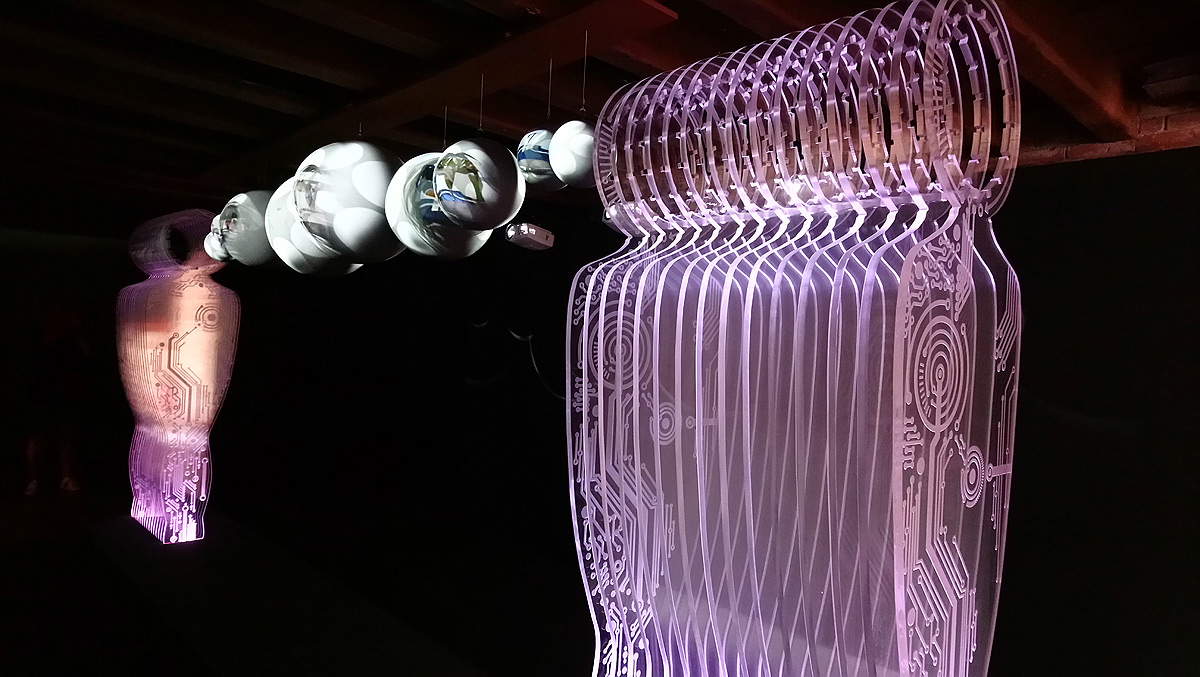 |
| Azerbaijan Pavilion. Ph. Credit Windows on Art |
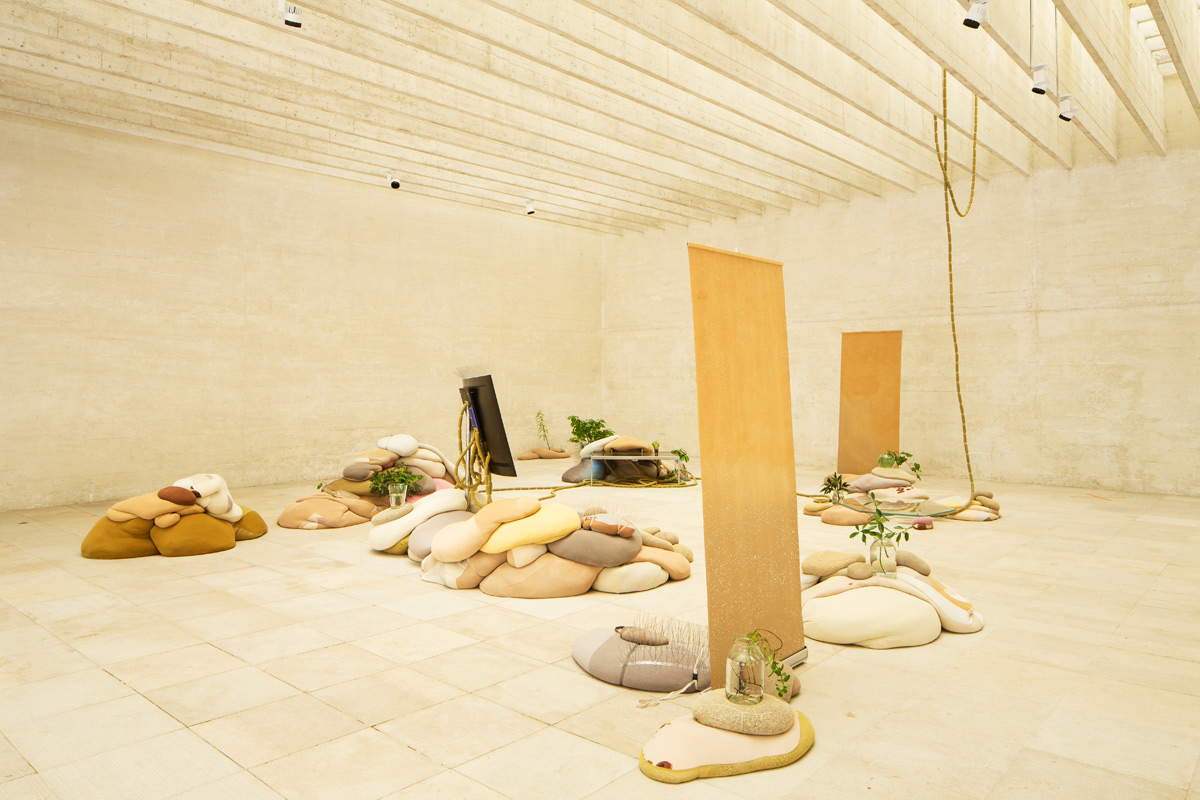 |
| Pavilion of the Nordic countries. Ph. Credit Francesco Galli |
9. United States
Exhibition: Martin Puryear. Liberty / Freedom. Artist: Martin Puryear. Curator: Brooke Kamin Rapaport.
The United States presents itself at the Venice Biennale with a solo exhibition by Martin Puryear on the theme of freedom, approached from multiple perspectives: the search for freedom, the conquest of freedom, the denial of freedom, and the paradoxes of freedom. Puryear’s exhibition is also a way to retrace some of the salient stages in the path that led us to freedom (his works include, for example, a huge Phrygian cap in a clear homage to Delacroix). Also particularly impressive is the installation Swallowed Sun, which literally cages the palladian U.S. Pavilion. After Mark Bradford’s 2017 intervention, another artist thus decides to “get his hands” on the building itself, and the result is decidedly effective.
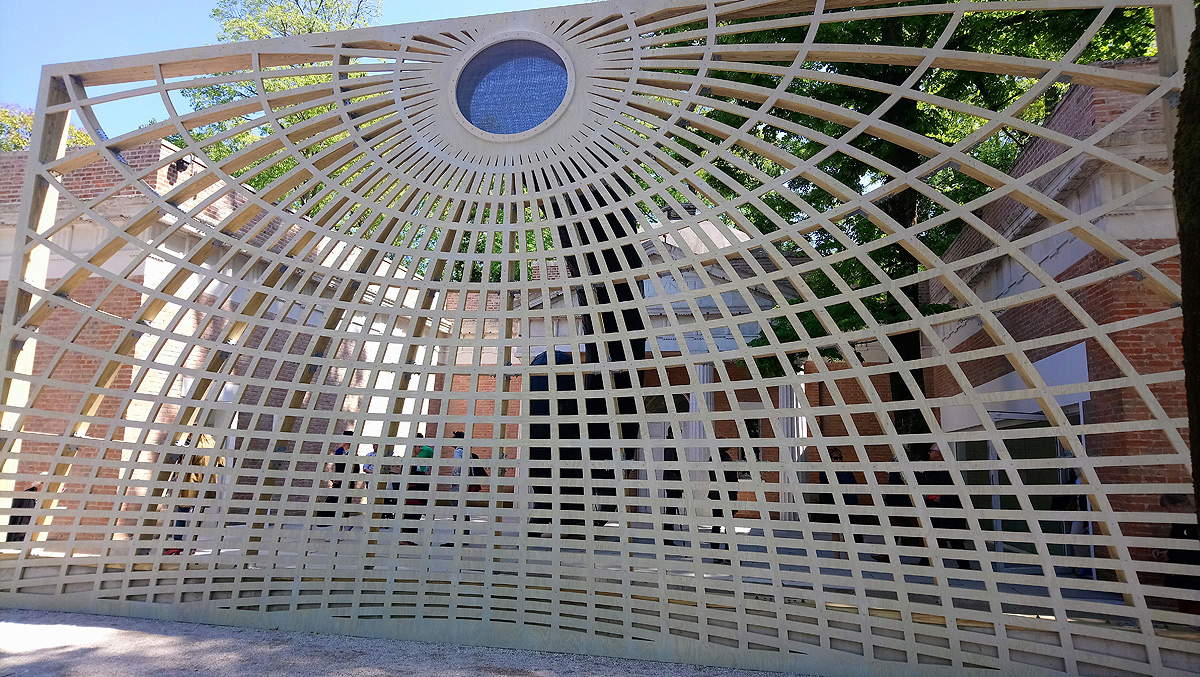 |
| U.S. Pavilion. Ph. Credit Windows on Art |
8. Portugal
Exhibition: A seam, a surface, a hinge or a knot. Artist: Leonor Antunes. Curator: João Ribas.
For her intervention for the Portuguese pavilion, at Palazzo Giustinian Lolin (not far from the Accademia bridge), Leonor Antunas explored the connections between art history, architecture, design and traditional activities, and put it all together for a refined intervention that transformed some of the palace’s rooms with works based on the four elements that give the exhibition its title (the seam, the surface, the hinge and the knot). Antunas wants to ideally pay homage to the great architects who have worked in Venice (from Carlo Scarpa to Franco Albini), and at the same time also to the practices of the local craft tradition (starting with Murano glass). This is a very interesting site-specific intervention because of its soft and intelligent approach to tradition and art history.
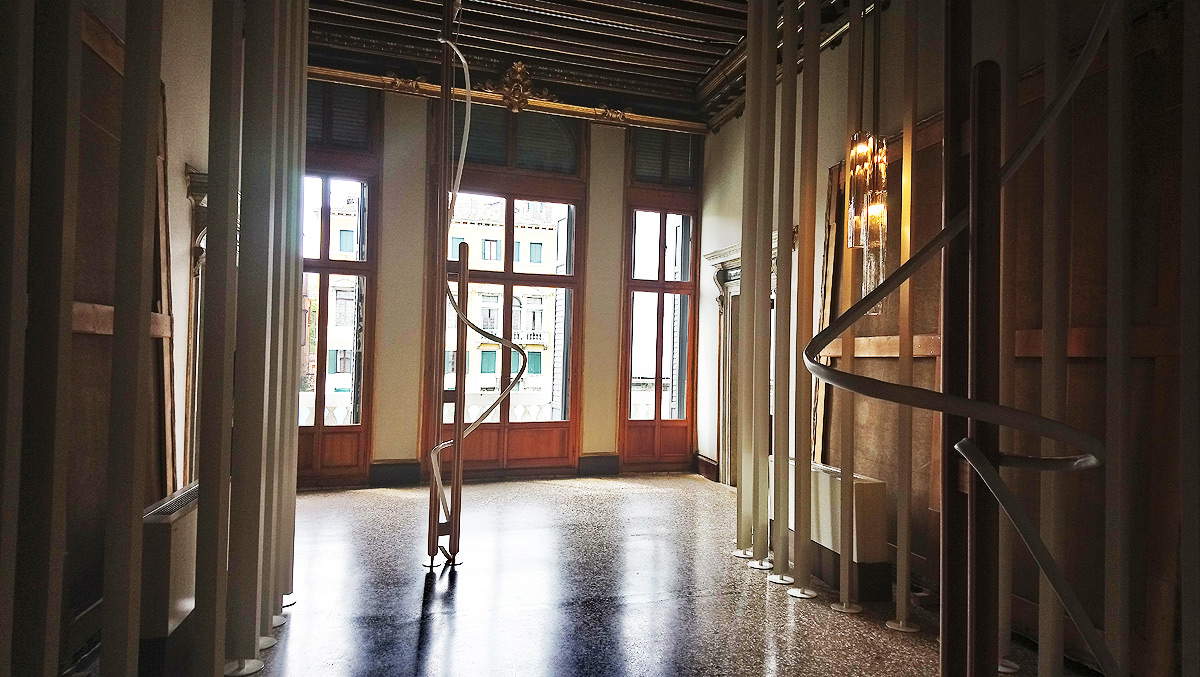 |
| Pavilion of Portugal. Ph. Credit Windows on Art |
7. Belgium
Exhibition: Dog World. Artist: Jos de Gruyter & Harald Thys. Curator: Anne Claire Schmitz.
The Belgium pavilion, awarded an honorable mention, takes us on a trip to a kind of theme park attraction, but one that has absolutely nothing reassuring about it, despite its playful, childlike appearance. Far from it: the Dog World by Jos de Gruyter & Harald Thys is a horror world, populated by madmen, criminals, murderers, alienated individuals, spies, visions of death, witches. It is the most disturbing pavilion of the entire Biennale, contains all the fierce and surreal irony typical of Belgian art (and it is not difficult to find echoes of the art of Bruegel, Rops or other greats of the Flemish and Belgian tradition) and is to be read as a single, large installation that mimics ethnographic museums (or even circuses) and is set up as a wonderland dominated, however, by ugliness, squalor, human misery and pettiness.
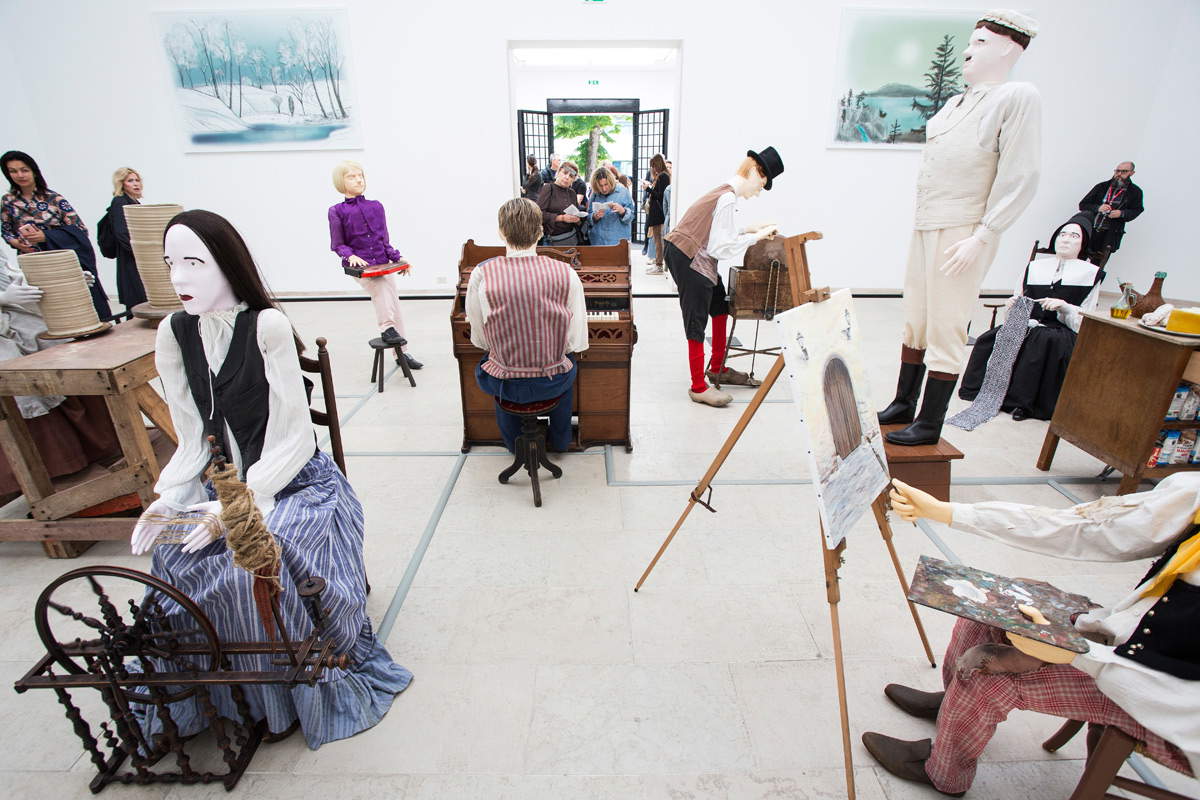 |
| Belgium Pavilion. Ph. Credit Francesco Galli |
6. Malta
Exhibition: Maleth / Haven / Port. Artists: Vince Briffa, Klitsa Antoniou, Trevor Borg. Curator: Hesperia Iliadou Suppiej.
The 2019 Biennial could not miss a reflection on the theme of migration: Malta took care of that, tackling this difficult and complex topic without the slightest thread of rhetoric. Far from it: the exhibition appeals to the need to find a refuge (“maleth”), a port, a home, in times of crisis. Thus, in the pavilion set up at the Arsenale come Klitsa Antoniou’s conceptual and artistic bridges, Trevor Borg’s journey through history (or rather: imagined prehistory) that aims to make the public reflect on our destiny, and again the ultimate path to refuge proposed by Vince Briffa. An exhibition that disintegrates prejudices and speaks with a language that is strongly rooted in the territory but manages to make itself universal.
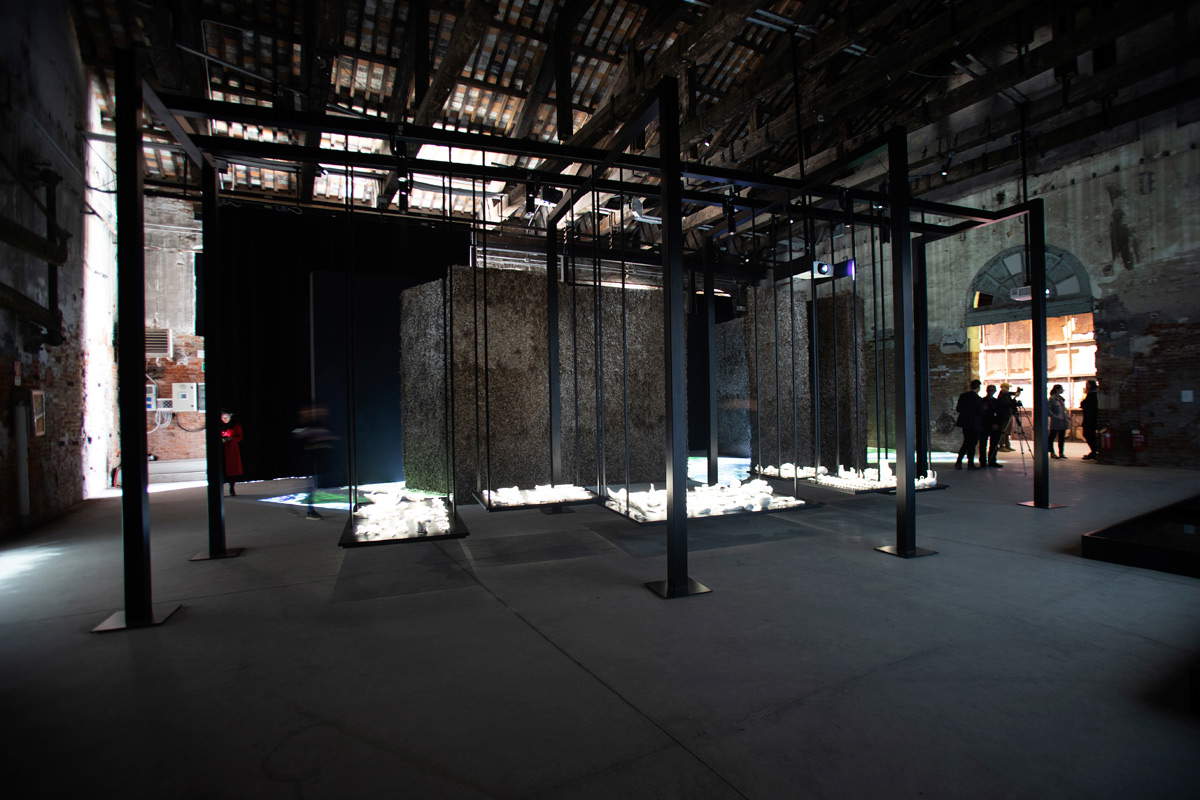 |
| Malta Pavilion. Ph. Credit Italo Rondinella |
5. Serbia
Exhibition: Regaining Memory Loss. Artist: Djordje Ozbolt. Curator: Nicoletta Lambertucci.
Serbia proposes, in this edition of the Biennale, one of its leading contemporary artists (as well as probably the best painter), namely Djordje Ozbolt, a regular presence at contemporary art fairs halfway around the world and represented by the most important galleries. Ozbolt does not deny himself in this pavilion and gives life to an intense solo exhibition with strong political connotations: Regaining Memory Loss is conceived as a large installation, made up of paintings and sculptures, which speak of individual and collective memory. The beautiful landscapes are like windows that, the curator explains, open onto illusory visions of time, the paintings in which figures appear refer to history but also to the painter’s personal experience (to investigate how one’s own memory merges with the collective one), and the extraordinary sculptures make fun of the celebratory monuments of Eastern Europe by ridiculing their rhetorical idealism. Finally, Ozbolt also questions the value of art and in particular the artist’s subjective interpretation of reality and memory.
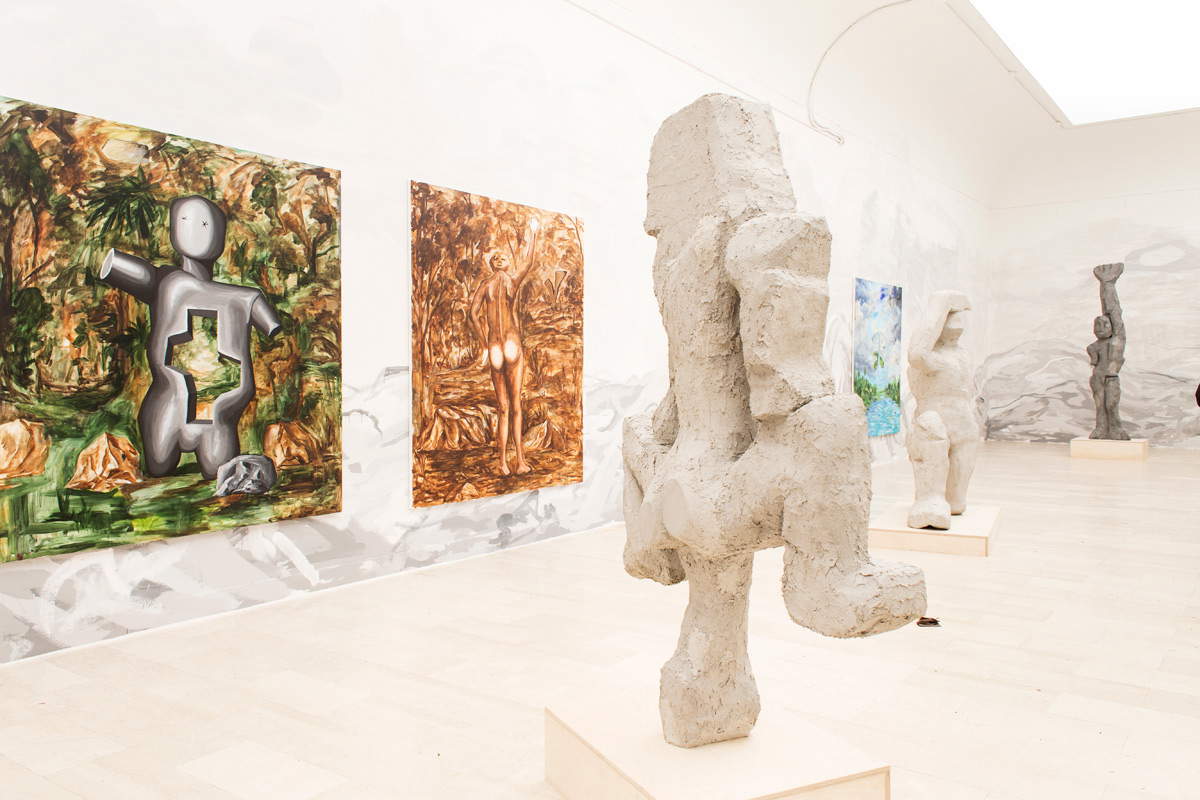 |
| Pavilion of Serbia. Ph. Credit Francesco Galli |
4. Russia
Exhibition: Lk 15:11-32. Artists: Alexander Sokurov, Alexander Shishkin-Hokusai. Curator: Michail Piotrovsky.
At the foot of our podium is the excellent pavilion of Russia, which takes the form of a grand homage to Rembrandt and his Return of the Prodigal Son (evoked by the title, which refers to the passage in Luke’s Gospel in which Jesus tells the parable), and is divided into two parts. In the first part, details of Rembrandt’s work are evoked by Sokurov’s talk, which situates the work of the great Dutch painter in today’s world to underscore the continuities between past and present and to highlight how the artist is not detached from the world around him. In the second part (we go down one floor), Alexander Shishkin-Hokusai recreates a museum with mechanized automatons, perhaps to show us what museums have become today, a kind of amusement park, a circus to be visited in a kind of collective ritual. It should be noted that the curator is the director of the Hermitage: it is stressed at the entrance that visitors hoping to find classical works in the Russian pavilion will be disappointed, but for those who love ancient art, Lk 15:11-32 is certainly the most evocative presence in the Biennale.
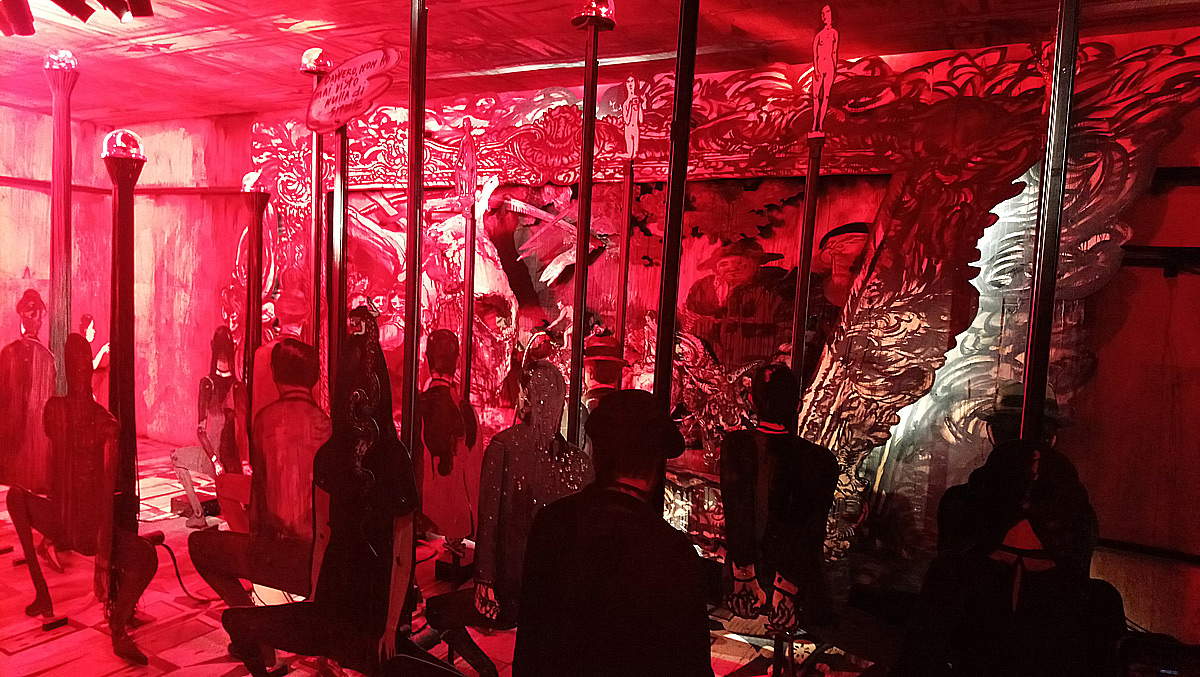 |
| Pavilion of Russia. Ph. Credit Windows on Art |
3. Ghana
Exhibition: Ghana Freedom. Artists: Felicia Abban, John Akomfrah, El Anatsui, Lynette Yiadom Boakye, Ibrahim Mahama, Selasi Awusi Sosu. Curator: Nana Oforiatta Ayim.
Ghana is a first-time participant at the Venice Biennale, but its pavilion surprised everyone, so much so that some were talking insistently about a Golden Lion: it didn’t turn out that way, but the African country was definitely among the eve’s papabili (and takes the ... bronze medal from Windows on Art). Curator Nana Oforiatta Ayim has gathered the greatest Ghanaian artists of today (and the Ghanaian scene, it is worth pointing out, is particularly active and vital) to bring to life a reflection on Ghana’s history from independence (achieved in 1957) to the present. The reinterpretation of this history, however, is intertwined with reflections on a present made up of migrations, aspirations, re-discussion of one’s identity, and reasoning on how to emerge from the post-colonial era to embrace a new vision. The works range from paintings to installations, photography to video, and all are enhanced by an effective installation created by David Adjaye, who recreates, without rhetoric or facile gimmicks, a piece of Ghana at the Arsenal.
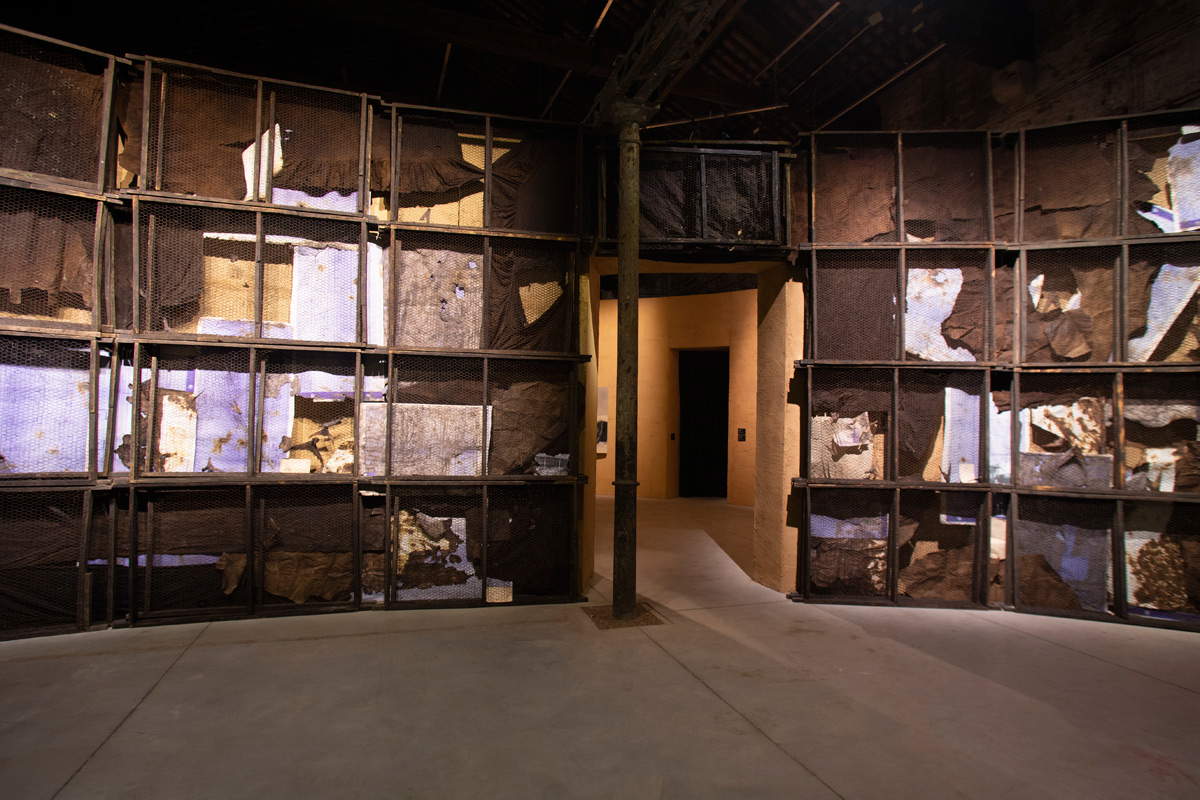 |
| Ghana Pavilion. Ph. Credit Italo Rondinella |
2. Great Britain
Exhibition: Cathy Wilkes. Artist: Cathy Wilkes. Curator: Zoe Whitley.
Great Britain offers a solo exhibition by Cathy Wilkes, which unfolds throughout the six rooms of the pavilion. It is in our opinion the most delicate, refined, feminine and graceful proposal of the entire Venice Biennale. Wilkes, Northern Irish by birth and Scottish by adoption, treats with gentleness and elegance, without falling into affectation, themes that have always permeated the history of art: birth, life, death, the passage of time. Hers is a work that speaks with a single voice but uses a variety of mediums, from sophisticated painting (almost harking back to romantic atmospheres) to simple, minimalist sculpture, without disdaining a kind of ready-made charged with meaning (the table with the lace tablecloth in the center of the penultimate room, or the perch in the second room, the interpretation of which is left to the visitor). Visitors may have to queue a bit to get in, but it is worth it. Silver Medal of Windows on Art.
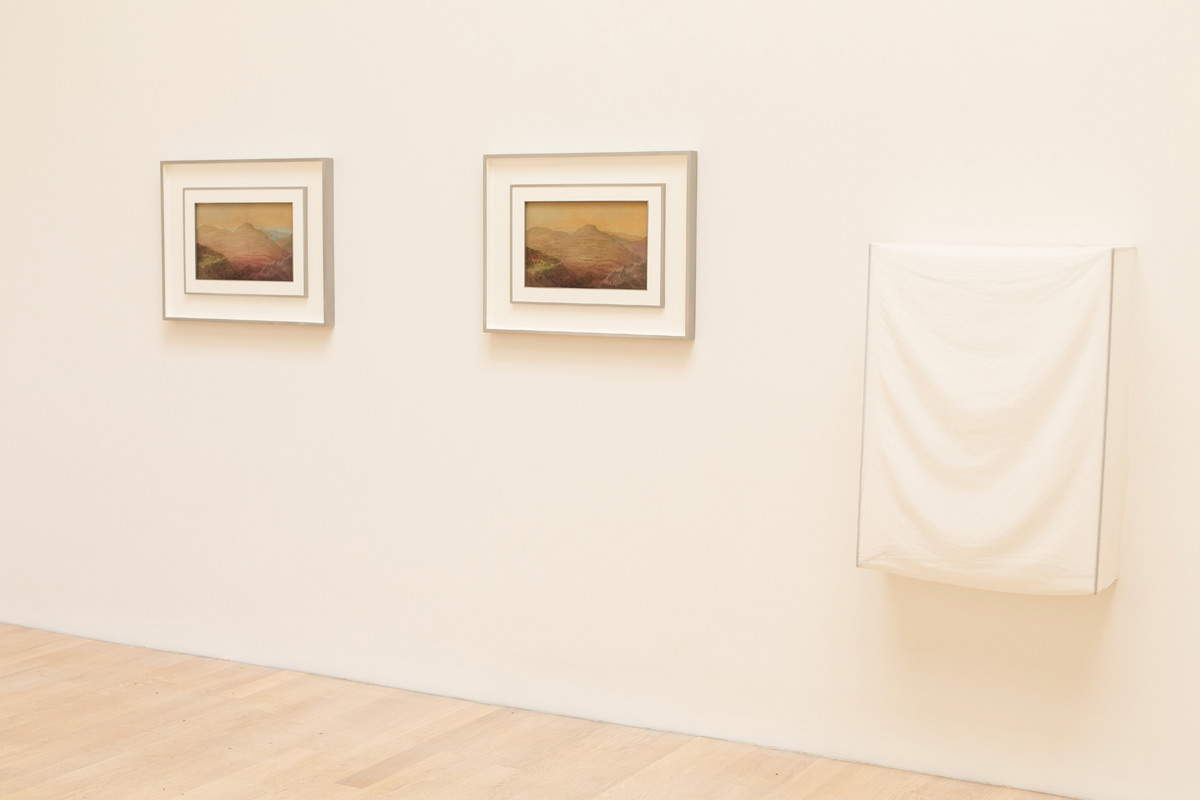 |
| Pavilion of Great Britain. Ph. Credit Francesco Galli |
1. France
Exhibition: Deep see blue surrounding you / Vois ce bleu profond te fondre. Artist: Laure Prouvost. Curator: Martha Kirszenbaum.
France comes to the Venice Biennale with an extraordinary total artwork by Laure Prouvost. An exhibition that is, however, also a unique work of art that mixes all languages, from painting to sculpture, from video art to performance, without smearing and also aiming to excite the visitor (an objective fully succeeded thanks to an excellent immersive set-up). Laure Prouvost’s exhibition-work touches on various themes, moving, however, against the backdrop of the liquid society in which we live and which is evoked at the opening of the itinerary with an installation that recreates a mock sea in which fish of all kinds swim but in which detritus and waste produced by consumerism also move (and which then returns in another room, with an overlook that allows us to see other visitors as an integral part of the work). There are references to the present but also to history, and the message given by the French artist is nonetheless positive, as an escape route is proposed that rests on values such as simplicity, friendship, discovery, and connections with others. Be prepared for long lines to get in, but for wide detachment Deep see blue surrounding you / Vois ce bleu profond te fondre is in our opinion the best proposal of the whole Biennale.
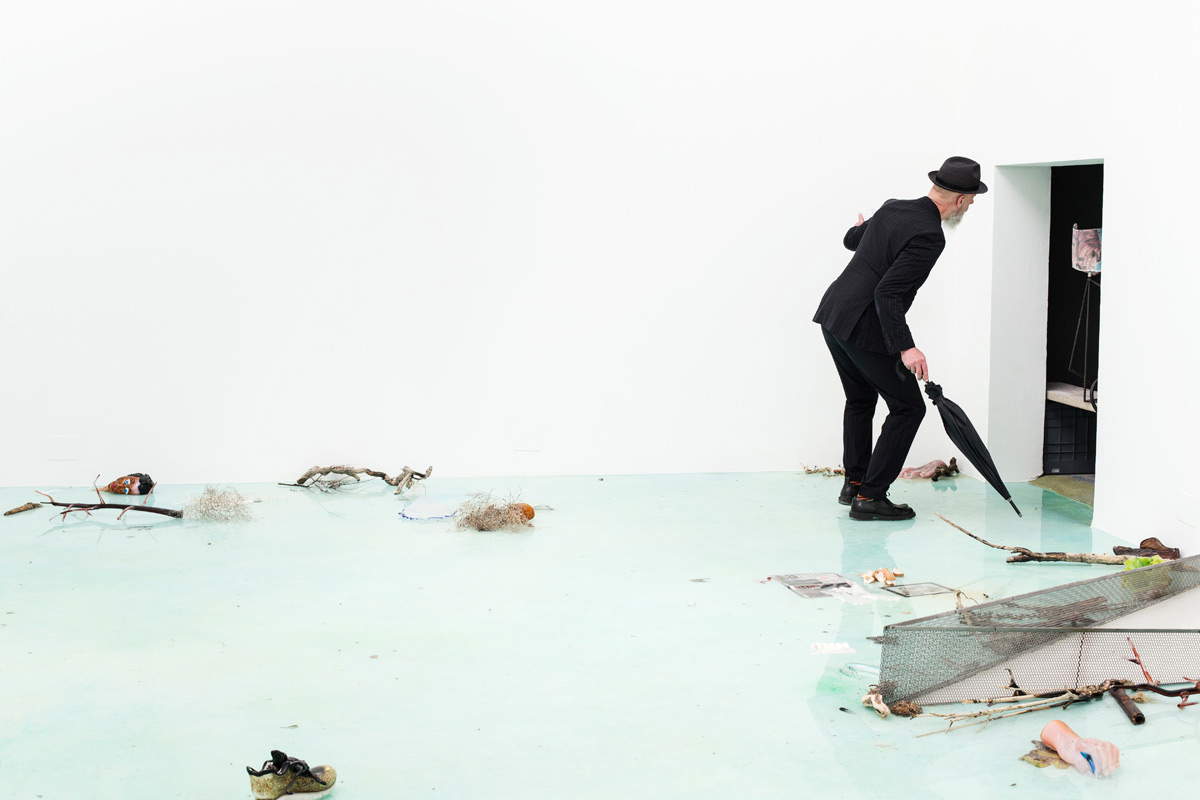 |
| France Pavilion. Ph. Credit Francesco Galli |
Warning: the translation into English of the original Italian article was created using automatic tools. We undertake to review all articles, but we do not guarantee the total absence of inaccuracies in the translation due to the program. You can find the original by clicking on the ITA button. If you find any mistake,please contact us.




